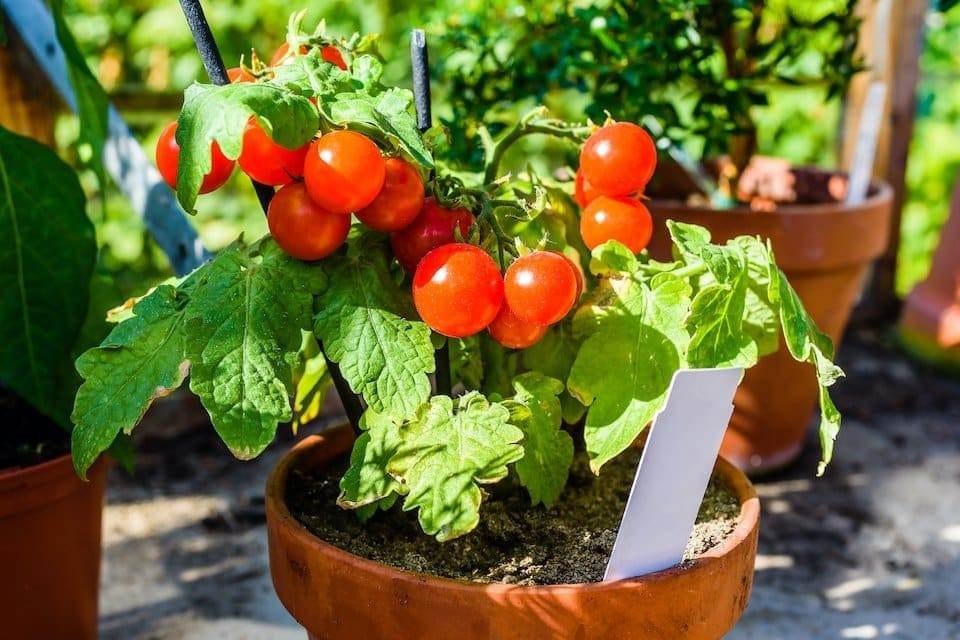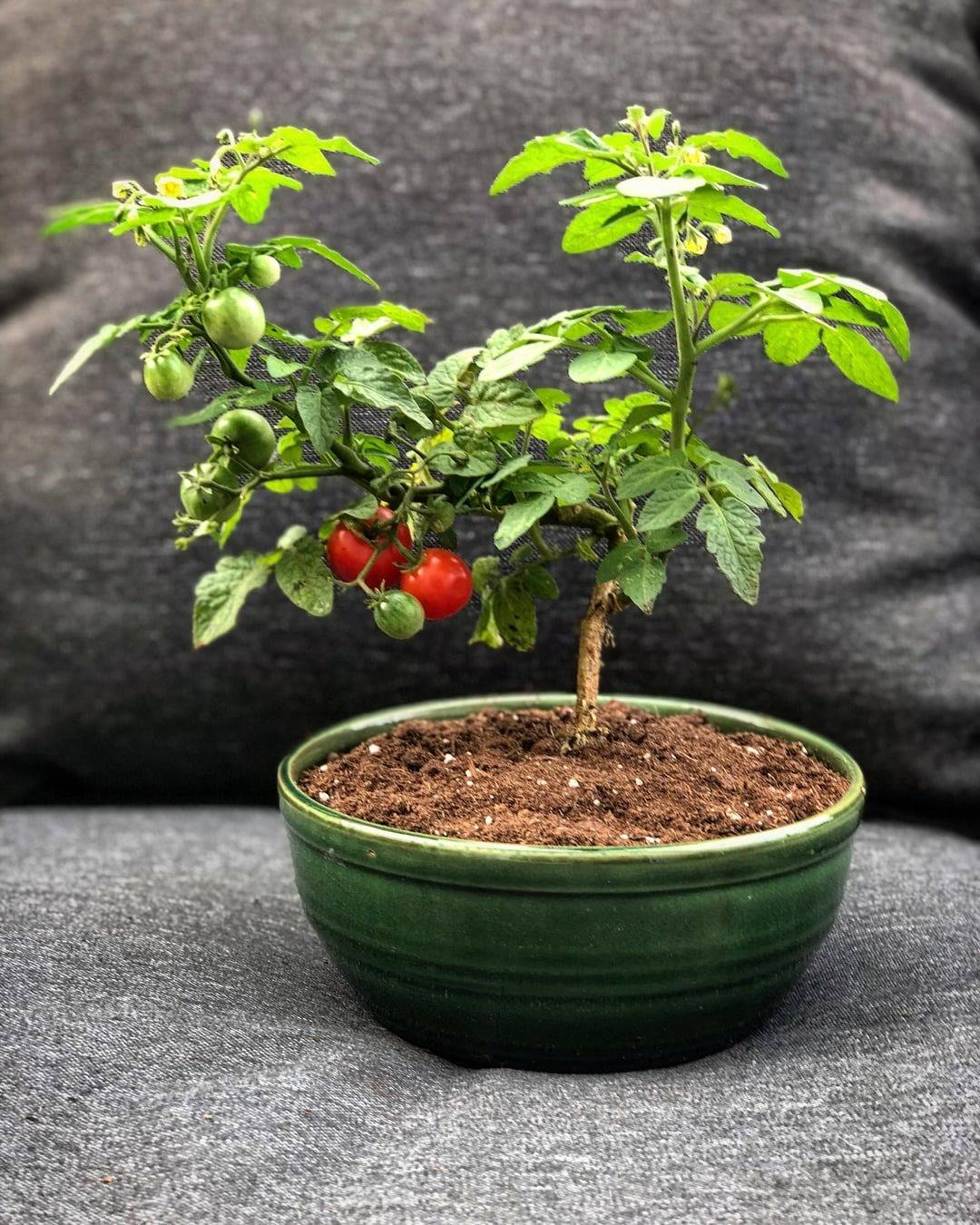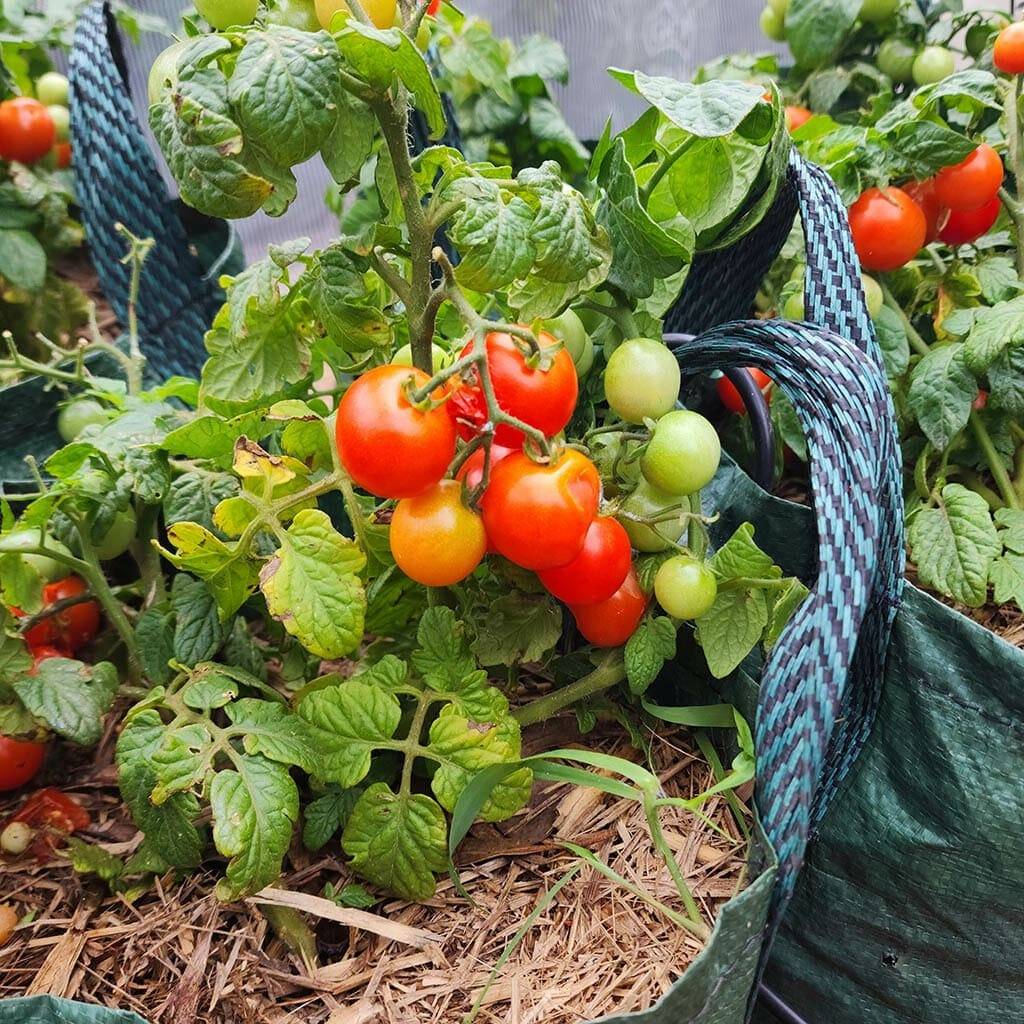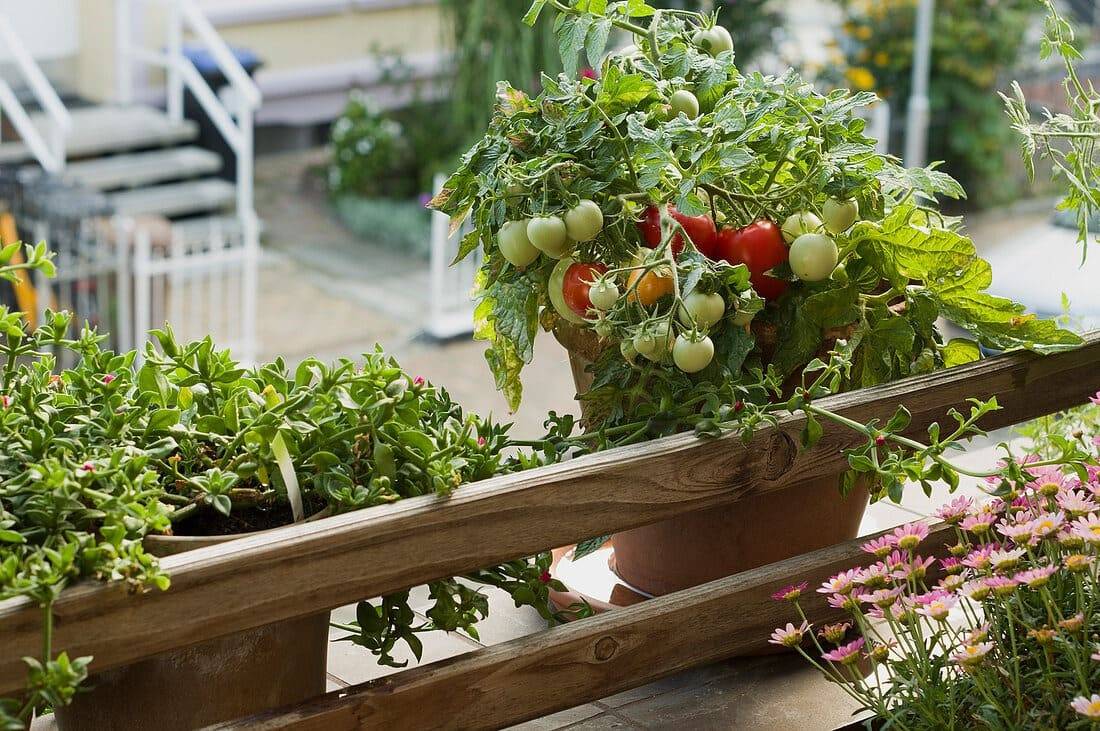Bonsai, originating from Japan, is the intricate cultivation of miniature trees that only artist can master for decades. This work requires lots of efforts and dedication, but fear not. The good news is now you can adapt this method to tomatoes to add a delightful twist to traditional gardening and practice the art of bonsai with the joy of harvesting juicy tomatoes.
So if you want a compact work of art that thrives on your windowsill or balcony, you’ve come to the right place. This guide will show you how to transform a mini tomato tree into a masterpiece.
A Comprehensive Guide
Step 1: Select The Right Tomato Varieties And Containers
1. Tomato Varieties
Not all tomato varieties are suitable for the bonsai art, so you should opt for compact or determinate varieties, such as Tiny Tim or Balcony, which naturally lend themselves to the confined space of containers.
2. Containers
The choice of containers also matter as tomato varieties. Select pots that provide ample space for root development, preferably with good drainage to avoid waterlogged soil. Bonsai pots, with their shallow depth and artistic designs, not only facilitate root pruning but also add aesthetic flair to your miniature garden.

Step 2: Plant Tomatoes In Containers
Planting bonsai tomatoes requires a delicate touch. Begin with a high-quality, well-draining potting mix to provide the ideal foundation. Plant the tomato seedling at the center of the pot, ensuring it’s at the same depth as in its original container.
The artistry begins as you carefully arrange the branches, ensuring a balanced and visually appealing structure. You can mulch the soil surface to conserve moisture and discourage weeds, creating a clean canvas for your bonsai tomato to flourish.

Step 3: Pruning and Training Bonsai Tomatoes
Pruning is the spirit of the bonsai cultivation. You should regularly pinch off suckers – the shoots that emerge from the leaf axils – to encourage a more structured and manageable shape. Train the main stem with gentle twists and turns, guiding its growth.
You can consider using stakes or small trellises to support the developing branches and fruit, enhancing both aesthetics and functionality. Regularly assess your bonsai tomato’s form and shape it into a miniature masterpiece.

Step 4: Take Care Of Your Bonsai Tomatoes
1. Water
Bonsai tomatoes need to be watered regularly, but not too much. The soil should be moist, but not soggy. You can check the moisture level by inserting your finger into the soil. If it feels dry, it’s time to water. You can use a watering can with a long spout to avoid splashing water on the leaves, which can cause rot. Another method is to immerse the entire bonsai plant in a bucket of water once a week, until the air bubbles stop rising.
2. Sunlight
Bonsai tomatoes need at least six hours of direct sun every day. If you’re growing your plant indoors, make sure to place it near a window that gets lots of light. You can also use artificial lights to supplement the natural light from the sun. For growing outdoors, choose a spot that is sunny, but not too hot, as too much heat can stress the plant and affect its fruiting.

3. Fertilizer
Bonsai tomatoes need to be fertilized regularly to provide them with the nutrients they need to grow and produce fruits. You can use a liquid fertilizer that is specially formulated for bonsai plants, or a fish-based fertilizer that is rich in nitrogen, phosphorus, and potassium. Fertilize your plant every two weeks during the growing season, and every three to six weeks during the off-season.
Step 5: Harvest
As your tomatoes ripen, carefully pluck them from the vine. Then, you can enjoy the fruits of your labor in salads, as a garnish, or savored straight from the vine.

Keep In Mind
1. Pest And Disease
Bonsai tomatoes can be susceptible to aphids, spider mites, scale insects, powdery mildew, and root rot. Insecticides, fungicides, and natural therapies like as neem oil, garlic spray, and baking soda solution can be used to prevent or control these problems.
2. Rotating
You should rotate your bonsai tomato regularly to ensure all sides receive adequate sunlight. Plus, you should also replace the potting mix with fresh soil every year, or add some organic matter, such as compost or manure, to enrich the soil.

3. Companion Plants
Herbs like basil, thyme, and chives, veggies like asparagus and peppers, and flowers like marigolds and sunflowers make excellent companion plants for bonsai tomatoes. These plants can enhance the flavor, health, and yield of your bonsai tomatoes.
Growing bonsai tomatoes is a practice that invites you to sculpt nature into a miniature masterpiece, transforming your gardening experience into a work of art. So scroll up your sleeves, unleash your imagination, you’re on the way to have your own unique artwork.
